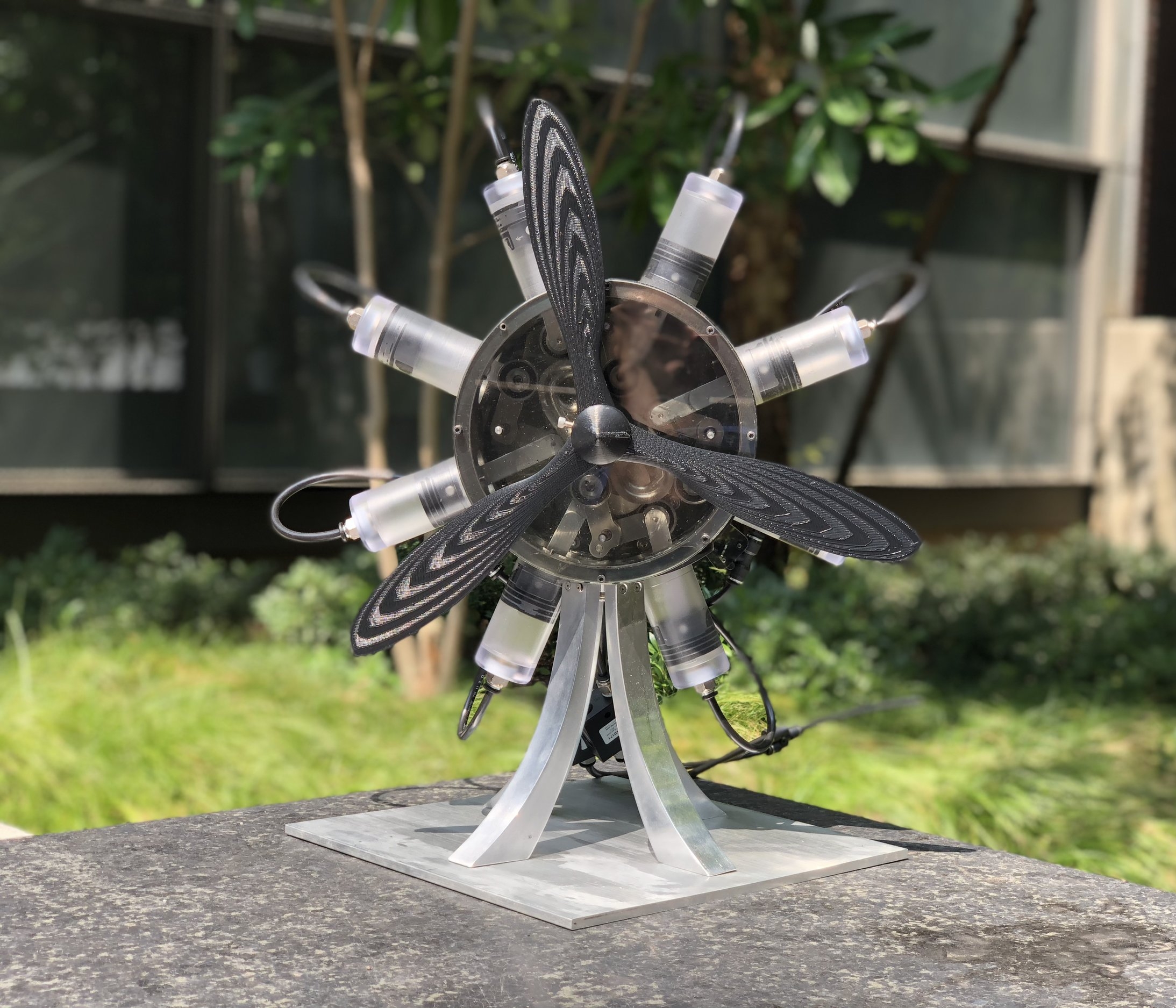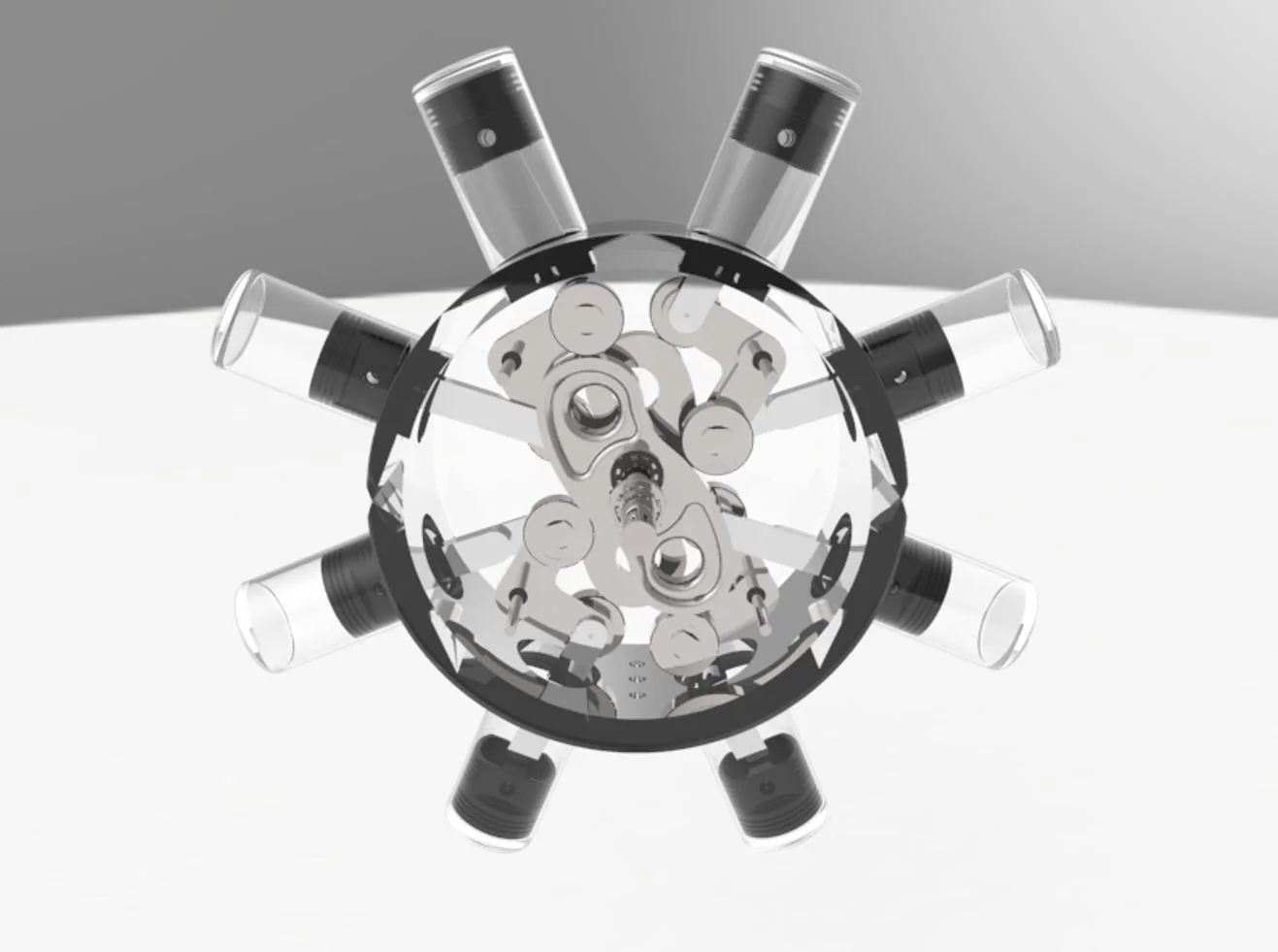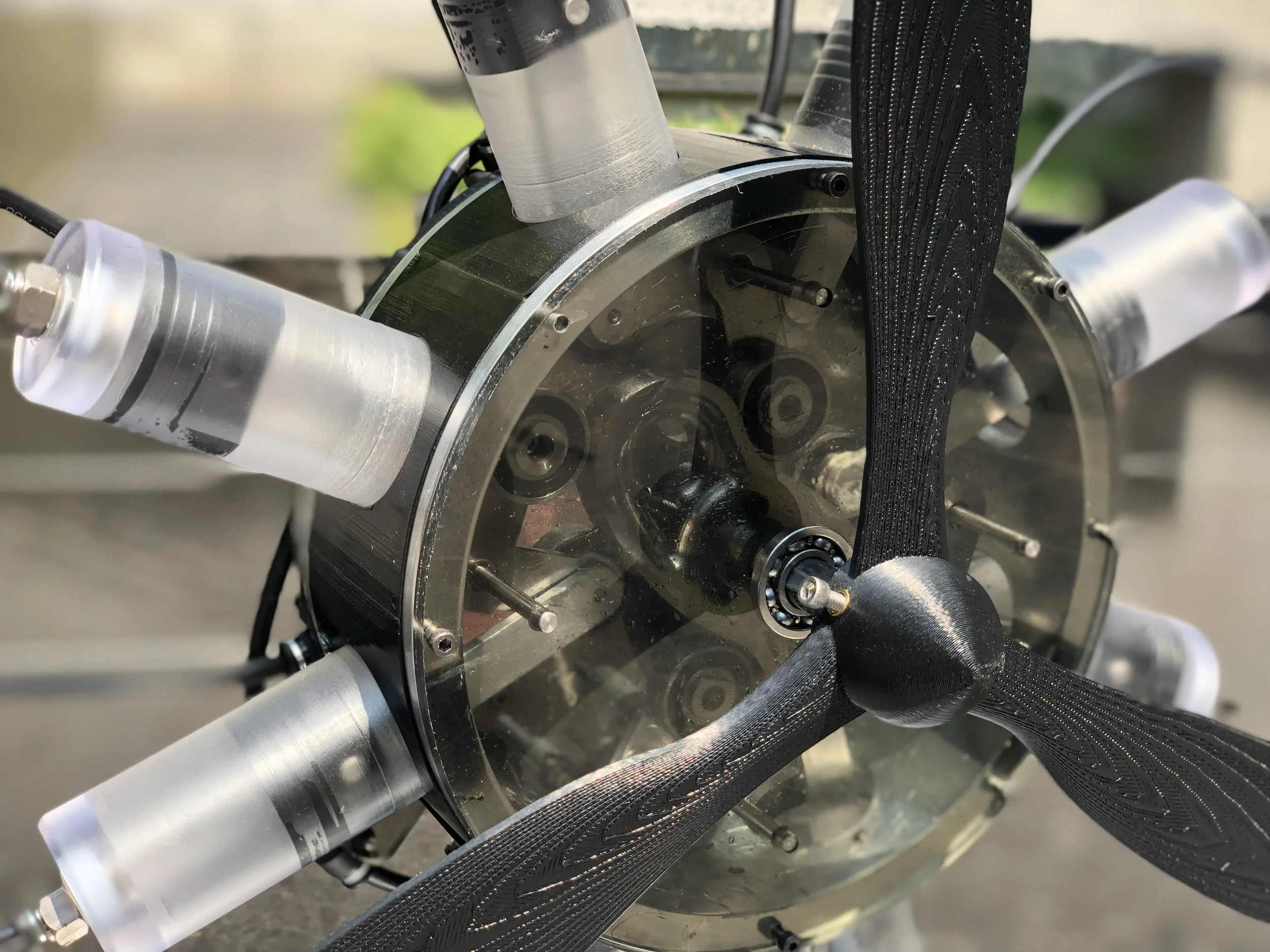Pneumatic Marchetti Engine
The final project of my Integrated Computer-Aided Design course was to design, prototype, and manufacture a product of sufficient mechanical complexity using the mechanical design skills and manufacturing methods we had learned that semester.
My team decided on building an antique radial aircraft engine design known as a Marchetti engine. However to increase design complexity and abide by university policy, the design was adapted to be a pneumatic engine rather than an internal combustion engine.
The Marchetti is a two-stroke dual cam-action radial engine. The two cams are located in different planes and offset at an angle from each other. This angular offset and the exact geometry of the cams depended on the location of the L-shape rocker arms, piston stroke length, and piston location.
Since the engine was no longer driven by internal combustion, we used a few unconventional engine-building materials to enhance the aesthetics of our design. Namely, we constructed the piston tubes out of polycarbonate, a durable, easily-machinable, and most importantly clear material. This allowed us to see the pistons firing while the engine was running.
Additionally, the piston themselves were constructed of black acetal (delrin), as it was a self-lubricating material soft enough to not cause scratches in the polycarbonate piston tubes while providing a strong contrast to be highly visible.
The cylindrical main body of the engine was cut out on all eight faces from a section of 8" OD 6061-T6 aluminum tube stock using a CNC mill and a dial indicator. The cams and rocker arms, which needed to be sturdier to handle the constant sliding contact with the bearings in the internal mechanism, were machined from 303 stainless steel using a Haas 3-axis minimill.
The piston tubes were cut on a CNC lathe from 1-1/8" polycarbonate round stock, while the pistons were also turned from 1" acetal round stock. Finishing flats and holes were then added with a CNC mill. The clear faces of the engine were also cut from polycarbonate sheet. The propeller was 3D printed using a Fortus Stratasys 450mc printer.
All other parts, such as the engine stand, engine timing parts, and piston connecting rods were cut from 6061-T6 Aluminum.
All GCode of CNC operations was generated using SolidCAM. Overall the fabrication process represented over 150 labor hours of work.













